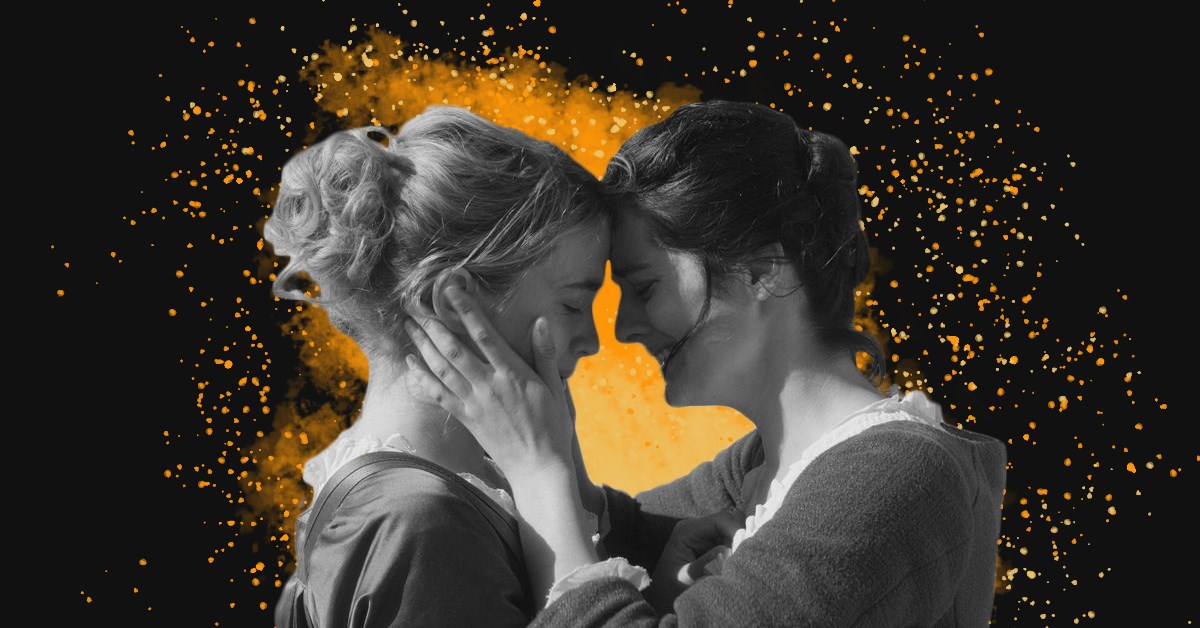I knew very little about Portrait of a Lady on Fire walking into the Somerville, my prior knowledge boiling down to a couple of key categories: art, lesbians, French. I wasn’t wrong, but this film transcended those three categories.
In eighteenth century France, artist Marianne arrives on a remote island off the coast of Brittany. She has been commissioned by a countess to paint a wedding portrait of her daughter, Héloïse, who has recently returned from living in a convent. Héloïse has previously refused to sit for any (male) artist as she does not want to marry , and the delivery of this portrait to her future husband is a crucial marriage custom. So, Marianne is to act as her companion, and then paint her in secret.
This is a beautiful film. The music is sparse, enhancing every intake of breath or creaky floorboard. When there is music, it is unconventional – one endearing scene where Marianne plays piano to try to get Héloïse to smile, and another which I’ve since heard described as a “post-medieval beach rave”. Visually, many shots resemble portraiture, with close ups on Marianne at work on her canvas juxtaposed against deserted beaches and barely decorated rooms. In total this reinforces a keen sense of geographical and emotional isolation from the male gaze, social conventions, and their own time period.
At the heart of it this is a love story, but it would do the film a disservice to say it is just about romantic love between Héloïse and Marianne. What Portrait does is quietly show us all kinds of love shared between women. We see this in the yearning relationship between Héloïse and her mother, how Héloïse mourns for her sister and, most prominently, how Marianne and Héloïse take Sophie, their housemaid, under their wing with gentle compassion. While watching this movie I became hyperaware of how many simple stories have existed like this, regardless of time – women quietly loving and supporting one another, almost always out of frame. Marianne describes being barred from painting male nudes, therefore restricting her ability to make a name for herself as an artist amongst her male peers. As the film progresses, we see Marianne start to depict painful truths of women’s intimate lives in her work; scenes absent from a visual art history dominated by men, only perpetuating patriarchal images of womanhood. Writer/Director Celine Sciamma gave us a glimpse into the strength that lies in the shared vulnerability between women. She did this in a way that Park Chan-wook’s The Handmaiden and Abdellatif Kechiche’s Blue is the Warmest Colour completely missed the mark on. These male directors seemed to prioritise gratuitous shock value, over the honest intimacy Portrait so gracefully celebrated.
“Do all lovers feel like they have invented something?” Héloïse asks Marianne after one of their first kisses. This aching question encapsulates how I feel about this movie. Through her naturalistic exploration of women’s memories and relationships, Sciamma has put forth a film which feels both timeless and endless. These bonds between women living outside of patriarchal norms have always existed, and will continue to exist, and Portrait shows how wonderful and rich in meaning these relationships are because they are sovereign. Do yourself a favour and go see it during the rest of its Somerville run, and bring the women you love with you.
Five burning portraits out of five.
Words by Amelia Birch
Amelia is currently single-handedly supporting Oatly sales in Perth while trying to puzzle out how writing about Romaine Brooks for her honours will lead to post-grad employment.
Graphic courtesy of Joshua Cahill.

